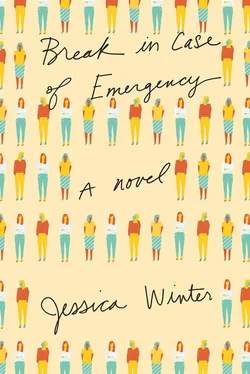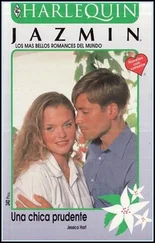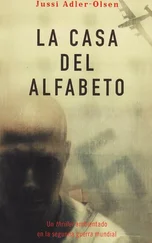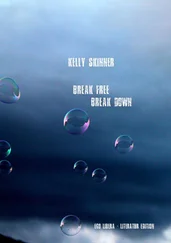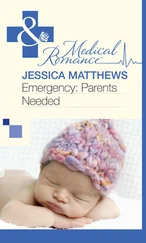“Arbitration,” Pam said. “If anyone asks, say this is arbitration.”
Pam had continued in this arbitrative vein for the entirety of her postcollegiate art career, year after year producing little that was sellable and less that was sold, and occasionally running into a spot of potentially career-enhancing trouble, as when she used grant money to purchase a month’s lease on a storefront next to a real estate agent’s office, painted the storefront to appear indistinguishable from the real estate agent’s, and posted property advertisements in the window that looked identical to the real estate agent’s — that is, until you looked closer at the descriptions, which were written in Pam’s recognizably run-on polemical style:
Panache! This dazzling new build destroyed three neoclassical buildings and a park and a dog run Now it’s a fifteen-story tower block Steps from Boutiques Bathed in Light No one making less than 500 % of the median local income can afford a studio here Turnkey terrific!!!
“It’s a commentary on gentrification,” Pam explained to Meg, whom Pam called for legal advice after receiving a cease-and-desist letter from the adjoining real estate agent.
To support herself, Pam presumably chugged along on enough one-off adjunct teaching jobs, freelance writing assignments, guest-curator gigs, and other odds and ends to get by. Pam and Jen never spoke of money, and to judge by the frigid winter temperatures in Pam’s quasi-legal abode, the smelly-damp bathroom she shared with a revolving door of lost-seeming strangers, and her static college-era wardrobe of holey leggings and faded Champion sweatshirts, Pam didn’t have any.
“Do you want to know how I know I’m not an artist?” Jen asked Jim one night, after coming home from one of her unemployed afternoons at Pam’s. “Because I couldn’t live like Pam lives.”
“I doubt Pam needs you feeling sorry for her,” Jim said.
“I don’t feel sorry for her!” Jen said. “I feel sorry for me!”
“Pam and Paulo are doing fine,” Jim said. “I liked that show they did about gentrification.”
“That was Pam’s show,” Jen said. Paulo made large, gooey clumps of things that gelatinized in her memory. He’d tie together dolls, tree branches, and tire irons into a stakelike arrangement and then pour gallons of red paint over it, or lace stacks of 1980s-era issues of The Economist with strings of Christmas lights that were also looped around the necks of vintage lawn jockeys sourced on eBay, and then pour gallons of resin over it.
“And I know Pam and Paulo are doing fine!” Jen continued. “That’s my whole point! I would not be fine, if I were them. But they are fine. More than fine.”
Pam had enlisted Jen’s collaboration on her current work-in-progress, although Pam was reticent about its exact nature. All Jen could glean about the project was her own role in it: to paint a series of five-by-four-foot portraits based on the grinning, healthy specimens in the promotional materials for WellnessSolutions, a health insurance company.
“So you just have to make sure you have a senior citizen, a new mom, and an apple-cheeked teen,” Pam told Jen, handing over the WellnessSolutions brochures, “and they should look maniacally happy. ”
In college, Jen painted larger-than-life photorealistic portraits of classmates, teachers, and celebrities: She projected a photograph onto a canvas, traced the main features in pencil, then painted in oil over the tracings. The aspirations toward extreme verisimilitude owed largely to an indelible nightmare Jen had as a freshman in which her first-year painting class was violently purged and repopulated by the blurry wraiths of Gerhard Richter’s Baader-Meinhof series. Though she would have admitted this to no one, Jen suspected that she had allowed her portraits to become so big because the ideas they contained were so small. Perhaps they didn’t even contain ideas so much as self-projections, as wobbly and coarse-grained as the mechanical projections that propped up her technique. There was an element of self-portraiture in the grinning nervousness, the anxiety of obedience, that could start creeping around her subjects’ mouths in the transition from photograph to canvas, in the obsequious gleam of the eye that might twinkle in the canvas but not in the photograph.
In Jen’s mind, she appropriated the outside of her work from photographs and the inside of her work from herself, and others mistook this for creativity.
“You are a fabulous copyist, Jen,” said one of her professors. For that class, Jen had painted identical twins in the Diane Arbus mode, and titled the work Biological Inheritance.
“You are an astonishing technician,” said another of her professors. “But what else are you?”
“I reproduce things,” Jen would say. “Things that already exist. I don’t even reproduce things — I reproduce reproductions of things.”
“Jen saying her art is not art is the most Jen thing that ever happened,” Meg would say.
“Jen, why do you make art if it’s not art?” Pam asked.
“Pam just made you into a koan, Jen,” Meg said.
“Why is your whole life a lie, Jen?” Pam asked.
“Hey, Pam,” Meg said, “do you think we could get Jen to put herself down about how much she puts herself down?”
“Hey, Meg,” Pam said, “if a snake ate its own tail, do you think Jen would apologize to the snake?”
Jen couldn’t go to Pam’s every day just because she was unemployed; or she probably could have, but she didn’t want Pam to feel responsible for finding ways to occupy her time. She needed to construct another rudder for her amorphous days, in which anxiety and sloth wrestled with each other only to reach a shaky alliance, usually culminating in a despondent, thrashing nap. Anxiety and sloth made a formidable team of antagonists because their shared goal was avoidance: avoidance of the gaping maw of job-posting sites; avoidance of other people with their helpful advice and compliments and solidarity, all of which Jen’s brain translated into prayers for the dying; avoidance of the immediate outdoor environment, which was bitterly cold and covered in the scattering stacks of uncollected trash and unidentified melting black shit that signified the liminal space between winter and spring in Not Ditmas Park.
Jen decided that the rudder would be a daily deadline: By the time Jim returned home from school, at around five p.m., Jen would have X number of cover letters written, Y job-research tasks fulfilled, Z closets or drawers cleaned out. And she would have drawings to show to Jim, and maybe even paintings.
Jim’s support of Jen’s dormant art career was as unconditional as it was uncorroborated, and it had maintained that sincerity ever since they’d first met, a year after college, when they both taught at the same summer enrichment program for children of low-income families in southeast Brooklyn. In the final blasting-oven days of August, Jen had presented each of their kids with a crayon-on-construction-paper portrait of him- or herself, carefully rolled into a scroll and tied with a blue silk ribbon like a diploma.
“Maybe that was presumptuous of me,” Jen had said to Jim as they watched their students ripple and zigzag out the classroom door one last time, a few of the portraits strewn on the cracked linoleum behind them, others rolled inside clementine-sized fists and thwack ing proximate shoulders. “It’s not like any of our kids were asking for the priceless gift of my artistic expression, like it’s some kind of reward. And drawing someone’s face is such an intimate act. Literally holding up a mirror to someone takes a lot of mutual trust. It’s a kind of disclosure. I mean, who am I to tell them what they look like?”
Читать дальше
